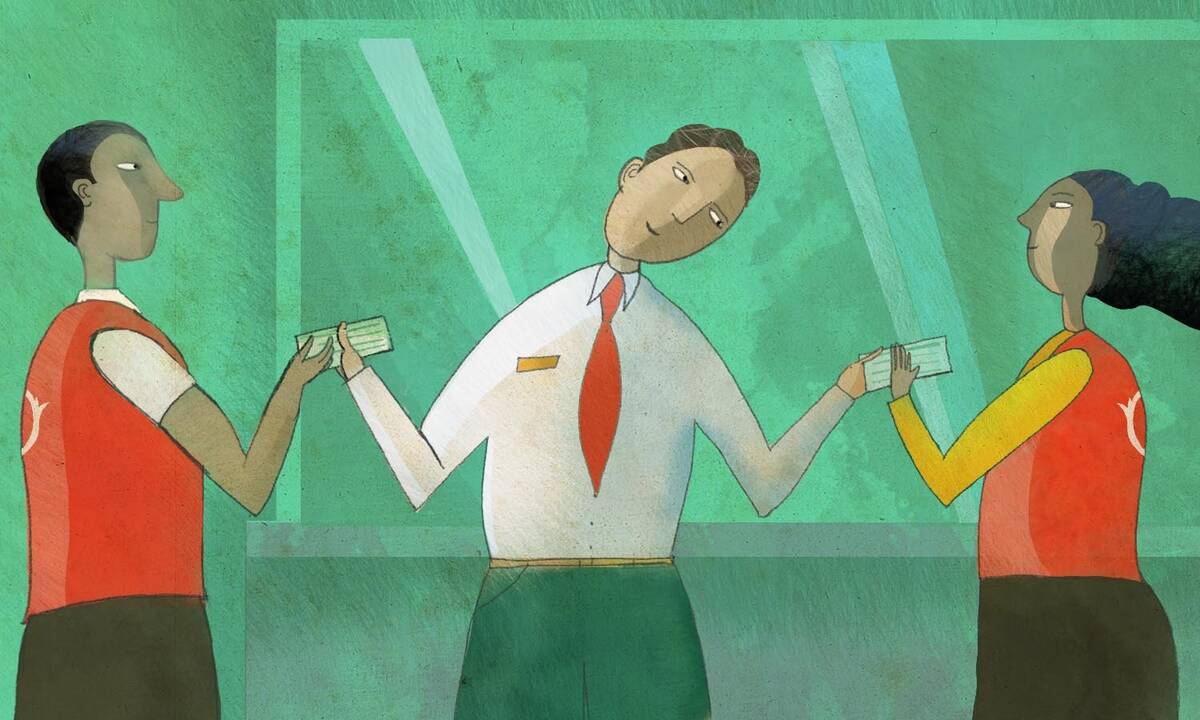Moreover, because women are often overrepresented in lower-wage work, they typically see larger financial gains than men do from such policies, despite the policies being overtly gender-neutral.
But a new study complicates this picture, showing that when overall welfare (or well-being) is considered, women may actually benefit less than men from a rise in minimum wage. The findings come from research by Nicola Persico, a Kellogg School professor of managerial economics and decision sciences, who worked with Kellogg associate professor Erika Deserranno and Decio Coviello of HEC Montreal.
Using data from a large U.S. retailer, the research confirmed that, among sales associates in the same department, women saw less of a benefit to their welfare from minimum-wage increases than did men.
The discrepancies in welfare occurred because women responded to minimum-wage increases by working disproportionately harder at their job. This was true specifically in counties where market wages for most jobs were lower for women than men; in counties where market wages were the same, there were no gender discrepancies in welfare. This suggests that women were more incentivized than men to keep their jobs because they had fewer opportunities to earn similar wages at a different workplace, which compelled them to put forth more effort.
“Precisely in markets where the women’s wages are much lower than the men’s, these are the times and places where women respond more forcefully to a minimum-wage increase,” Persico says. This has important implications for worker well-being beyond pay.
Impact of wage increases
The researchers partnered with a national retailer that operates more than 2,000 stores across all 50 states to study the impact of minimum-wage increases on its employees. For their analysis, Persico and colleagues focused on a subsample of more than 10,000 sales associates working at about 200 of the retailer’s stores from February 2012 to June 2015.
Consultative sales associates in the company assist walk-in customers by answering their questions and demonstrating product features. They receive a fixed base pay that varies by location and a commission earned through upselling higher-margin products, credit cards, and warranties. Since their fixed base pay is typically lower than minimum wage, the employer will top up the employees’ pay to ensure it at least matches minimum wage when they don’t earn enough from commissions.
All of the company’s stores have the same gender-neutral pay policies, but the minimum wage that constitutes their base pay varies depending on state and local laws. The researchers identified more than 100 pairs of stores located near each other across state and county borders, where one of the stores in each pair was located in a jurisdiction that had increased the minimum wage and the other one was not. This created a natural experiment that allowed the researchers to investigate the impact of these minimum-wage increases on store employees.
To do this, the team developed a novel formula. It showed that increasing the minimum wage at stores in counties where, on average, women were paid less than men only served to widen gender disparities within the company.
Specifically, an increase in the minimum wage pushed women sales associates to work harder and, in turn, generate larger increases in sales per hour than their male counterparts. And because women were putting in more effort to be productive and increase sales and commissions, they were less likely to get “topped up” to minimum wage.
“In this way, the uneven opportunities outside the company create disparities in worker well-being inside the firm,” Persico says. “This happens even in companies with the most meticulously gender-neutral pay schemes.”
The upshot? Even companies with gender-neutral wage policies may need to consider external factors, such employees’ outside opportunities, for their policies to have their intended effect.
Still, the researchers believe that well-planned minimum-wage increases could serve as a “force for gender equalization” in the U.S. labor market. That’s because women still hold lower-paying positions more often than men, meaning they are more likely to see a wage increase.
Indeed, when the researchers evaluated the impact of minimum wage increases on store employees across different roles and departments in their dataset, they found that women benefited more from minimum-wage increases than men for just this reason.
Not enough to look at wages
Whereas past research has documented the effect of minimum-wage increases on pay distribution, Persico and colleagues’ paper may be the first to quantify the impact that a gender-neutral pay policy has on employee well-being.
“It is not necessarily enough to look at just the wage scheme. We need to assess policies by considering their effects on the gender welfare gap rather than focusing on the gender pay gap, because these may not align,” says Persico.
He notes that, despite having equal pay with men, women were exerting additional effort out of fear of losing a job in an environment with limited opportunities. “Their managers are looking, and if they don’t produce, they’re going to lose their jobs,” he says. “They have an incentive to work harder.”




